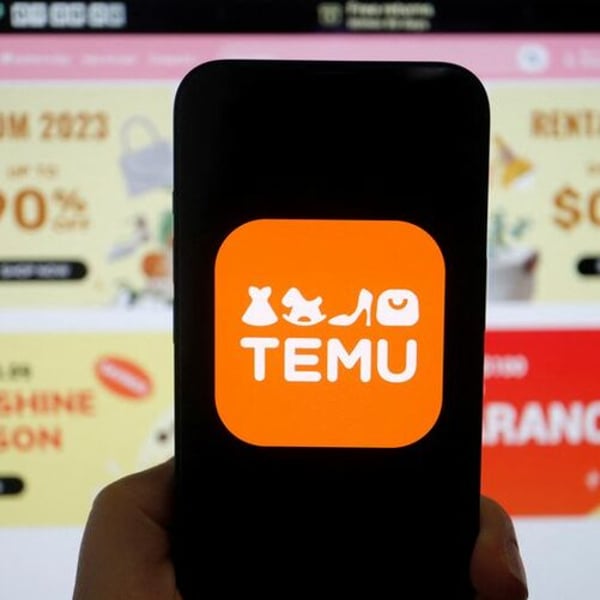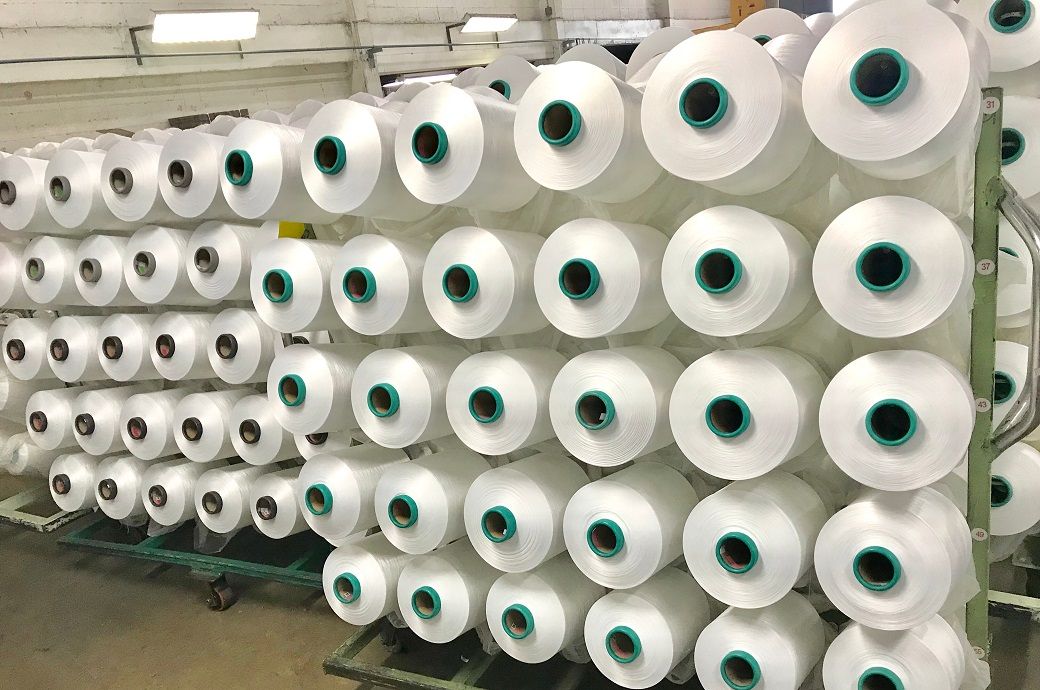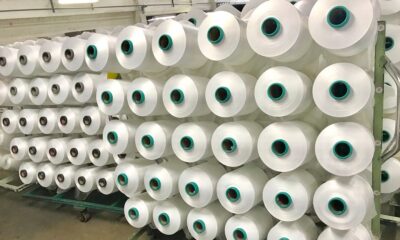Fashion
Nike’s turnaround gains traction, but China and tariffs weigh on outlook

By
Reuters
Published
October 1, 2025
Following its stronger-than-expected Q1 results, Nike’s leadership and analysts discussed the road ahead amid inventory cleanup, challenges in China, and a renewed focus on sports.
Nike CEO Elliott Hill vowed to return the company to its sportswear roots when he took the helm last year in a highly anticipated change, and his efforts are bearing fruit — but a sluggish recovery in China and uncertainty over tariffs remain a drag on the company.
The company, which reported a surprise rise in quarterly revenue, has aggressively cleared out aged inventory, as well as some lifestyle product lines, to focus on more innovative shoes centered on sport.
“Nike is in the early innings of its turnaround and momentum is building,” said Jefferies analyst Randal Konik in a note.
The company said on Tuesday that its order book for spring was up year-over-year, driven by its sports category, as launches such as the Vomero, Pegasus, and P-6000 running shoes bring back customers.
Running, training, and basketball categories each reported double-digit growth in the quarter in North America, enabling a return to sales growth in the region after about a year.
“We think retailers — like the combined Foot Locker and Dick’s Sporting Goods — are reacting positively to Nike’s new running shoe lineup,” said Morningstar analyst David Swartz.
Nike’s shares were up about 3% in premarket trading on Wednesday as investors welcomed a 2% reduction in inventory.
“I am very pleased with inventory levels. Units are down more than dollars as inflation starts to come through. They have largely cleared through older franchises,” said Mari Shor, senior equities analyst at Columbia Threadneedle.
The pressure points
Progress will not be linear, Hill warned on a post-earnings call, with tariffs now expected to cost about $1.5 billion — versus the $1 billion Nike estimated previously — and weigh on margins already strained by heavy discounting to clear stock.
China remains a challenging market, with intense competition from lower-priced local brands such as Anta and Li-Ning, which further exacerbates a weaker economic recovery and a struggling wholesale business.
“We can invest to keep the marketplace clean and healthy, but it’s an expensive operating model if sell-throughs don’t improve to the levels that we need to see on a season-in, season-out basis,” said Chief Financial Officer Matthew Friend on a post-earnings call.
Customer engagement also remains weak in the company’s digital business, with revenue falling 12% in the quarter. Hill said the global digital business was still working to find solid ground, with the company paring back promotions on the channel.
Nike’s direct-to-consumer business is not expected to return to growth in fiscal 2026, executives said, as the unit recovers from steep discounts used to clear out inventory of some of its classic labels, such as the Air Force One and Air Jordans.
“I originally thought that Nike would be further along. I was looking at this fall as the real breakout point, but it’s clearly not going to happen until calendar ’26,” said Swartz.
FashionNetwork.com with Reuters
© Thomson Reuters 2025 All rights reserved.
Fashion
Temu-owner PDD Holdings beats profit expectations, outlook uncertain

By
Reuters
Published
November 18, 2025
China’s PDD Holdings beat forecasts on Tuesday with a 14% rise in third-quarter adjusted earnings, a sign that the e-commerce group’s steep discounts and heavy marketing spending bolstered demand in its home market.
Adjusted earnings per share of 21.08 yuan ($2.97) topped analysts’ average forecast of 16.84 yuan. However, U.S.-listed shares of the company, which runs the Pinduoduo platform in China and Temu internationally, were down about 5% in early trading.
Chinese retail majors such as PDD, Alibaba and JD.com have been wooing domestic shoppers with price cuts and billions of dollars’ worth of subsidised promotions during a prolonged period of subdued consumer confidence amid job worries and a weak property market.
Those discounts have translated into higher sales, although below PDD’s typically high double-digit rates of previous years.
PDD said revenue rose 9% in the quarter, while JD.com reported steady sales growth last week, pointing to strong demand for general merchandise and staples.
“We have seen many industry peers deploy significant capital to develop new business models, leading to increasingly fierce competition,” said PDD’s co-CEO Zhao Jiazhen on a post-earnings call with analysts.
He reiterated the firm expects financial results to continue fluctuating in the coming quarters as it invests in merchant support programmes and platform upgrades.
Globally, Temu and other cross-border platforms like Shein selling cheap goods from China to the rest of the world have come under pressure after the U.S. scrapped duty-free exemption on parcels worth less than $800 and the EU looks to introduce duties on low-cost packages from next year.
Temu was also among platforms cited by a French consumer watchdog last week for selling illicit products.
“Today, with a rapid evolution of trade barriers, we are seeing a significant shift in the regulatory environment for the global business. We will inevitably face greater challenges and uncertainties,” said co-CEO Chen Lei.
PDD reported revenue of 108.28 billion yuan for the quarter ended September 30, compared with the 108.41 billion yuan average of 15 analyst estimates compiled by LSEG.
Adjusted net income attributable to PDD’s shareholders was 31.38 billion yuan, compared with 27.46 billion yuan a year earlier.
The Singles’ Day sales festival, one of the biggest shopping events in China, also ended on a subdued note. Many retailers kicked off discounts in the first half of October, making it the longest festival to date.
Pinduoduo saw sales growth of 11.7% in the period, while JD.com’s and Alibaba’s platforms saw increases of 8.3% and 9.3%, respectively, according to data from Beijing-based tech and commerce consulting firm Analysys.
© Thomson Reuters 2025 All rights reserved.
Fashion
India’s QCO rollback boosts textile competitiveness, aids trade talks

However, during negotiations with the United States, the European Union and several other developed economies, these very QCOs were repeatedly flagged as opaque non-tariff barriers, complicating market access and slowing progress on key FTAs. When major trade partners made it clear that India’s expanding QCO regime was not aligned with global norms and posed compliance concerns under the WTO’s Technical Barriers to Trade framework, the long-pending course correction finally gained urgency, as industry insiders hinted about sudden policy shift of the Indian government.
The recent withdrawal of QCOs for essential textile raw materials—covering PTA, MEG, PSF, PFY, FDY, POY and several technical polymers—has opened the door for full value addition in India’s MMF and textile ecosystem. Manufacturers across weaving, knitting, processing, technical textiles and garmenting say the rollback has restored access to globally benchmarked inputs at competitive prices, reversing the cost escalation that had eroded export competitiveness. Industry representatives note that the move has already begun easing supply bottlenecks, narrowing the gap between domestic and global prices and encouraging companies to revive deferred expansion plans.
Fashion
GS1 France appoints Laura Barnac as executive chair

Published
November 18, 2025
GS1, the international standards organisation underpinning barcode and QR Code technology, has announced the appointment of Laura Barnac as executive chair of its French division.
A specialist in business transformation, Laura Barnac has led projects for groups such as Unilever and LVMH, as well as for mid-cap companies including Daregal. Co-founder of the start-ups Voka and Melco, focused on innovation and marketing, she has also served as an adviser to Bpifrance and Sakina M’Sa, and oversaw Moët Hennessy’s online operations.
A member of the GS1 France Board of Directors since 2019, Laura Barnac now succeeds Didier Veloso, the organisation’s executive chair for the past four years, beginning a tenure that will be marked by the progressive migration from barcodes to augmented QR Codes.
“Laura Barnac has impeccable credentials and a nuanced understanding of the challenges ahead,” say Bertrand de Senneville and Philippe Lemoine, co-chairs of the Supervisory Board of GS1 France. “She has also demonstrated throughout her career a leadership style grounded in listening and the human element, which will help accelerate and amplify the transformation under way.”
Launched in 1973 in the US with the invention of the barcode, and rolled out in Europe in 1977, GS1’s mission is to ensure technological coordination among all players in commerce with regard to product identification tools. The not-for-profit organisation brings together more than 58,000 member companies in France, and over 2 million worldwide.
This article is an automatic translation.
Click here to read the original article.
Copyright © 2025 FashionNetwork.com All rights reserved.
-

 Tech1 week ago
Tech1 week agoFrom waste to asset: Turning ethanol production CO₂ into jet fuel
-

 Tech3 days ago
Tech3 days agoNew carbon capture method uses water and pressure to remove CO₂ from emissions at half current costs
-

 Politics5 days ago
Politics5 days agoBritish-Pakistani honoured for transforming UK halal meat industry
-

 Sports3 days ago
Sports3 days agoTexas A&M officer scolds South Carolina wide receiver after touchdown; department speaks out
-

 Business3 days ago
Business3 days agoThese 9 Common Money Mistakes Are Eating Your Income
-

 Tech1 week ago
Tech1 week agoSecurity flaws in portable genetic sequencers risk leaking private DNA data
-

 Fashion5 days ago
Fashion5 days agoAdidas & Patrick Mahomes expand NIL programme with Texas Tech athletes
-

 Business4 days ago
Business4 days agoWhat’s behind Rachel Reeves’s hokey cokey on income tax rises?


















